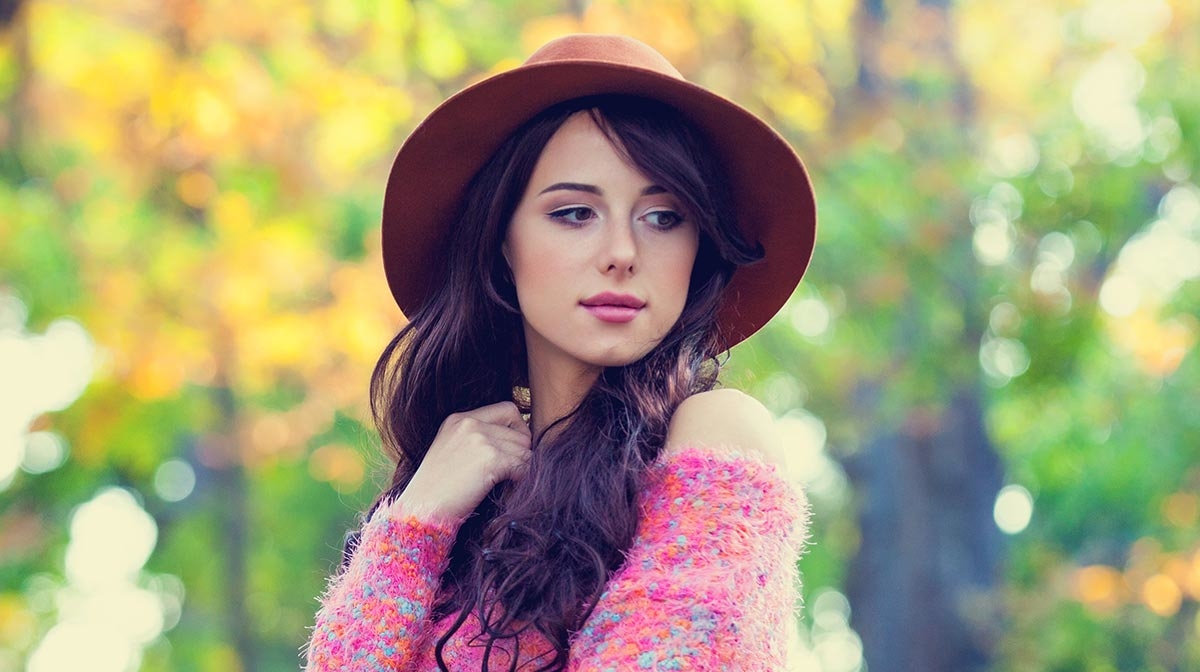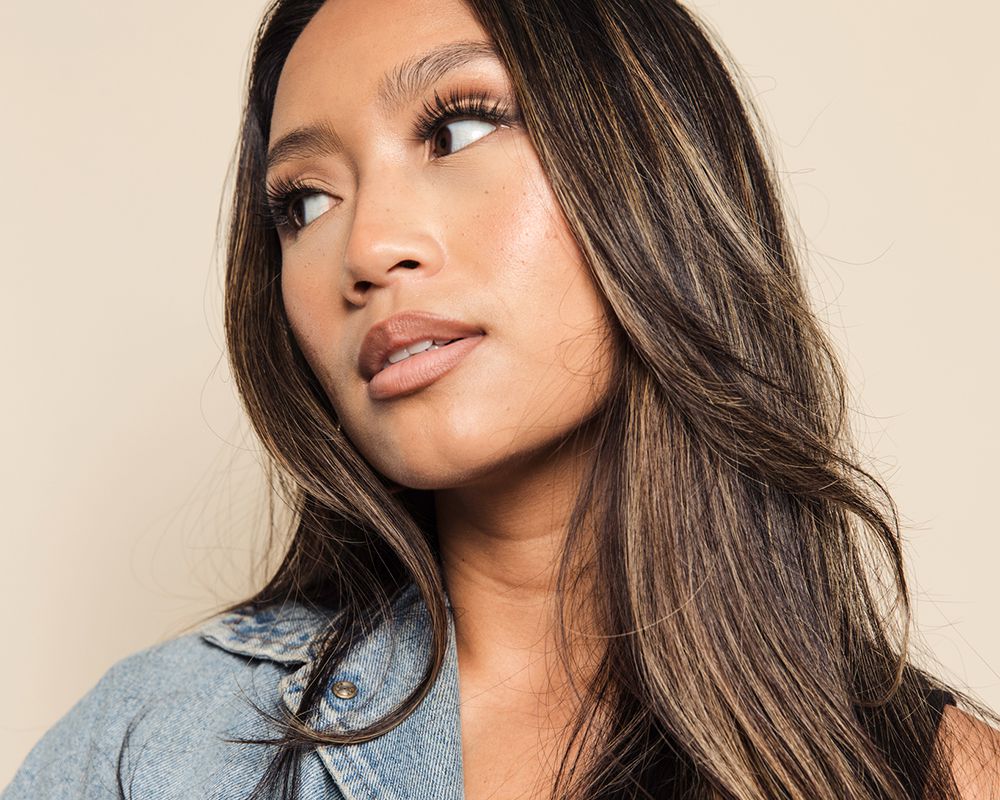Let’s be honest: Despite having the appearance of a Medieval torture device (and the very scary ability to pull out all of our precious, precious hairs), we’ve all shoved our lashes into a curler and repeatedly clamped down, praying for brow-grazing results. Sometimes, it works; other times, it doesn’t.
One way to avoid the agonizing tug and squeeze of the eyelash curler? Lash extensions. These semi-permanent fibers create longer, fuller, darker-appearing lash fringes that are completely customizable depending on your goals, eye shape, lifestyle, and more. Yes, they cost a pretty penny, but the results speak for themselves—they are the ultimate “I Woke Up Like This” life hack.
While any good lash expert is going to take all the guesswork out of the process for you, it never hurts to come in with a little bit of information. And while there are many different factors that go into creating a lash extension set, curl type is no doubt one of the most important elements.
Ahead, lash experts Clementina Richardson and Jay Escobar break down everything you need to know about lash curl shapes, plus other factors to consider when it comes to eyelash extensions.
Meet the Expert
- Clementina Richardson is a celebrity lash expert and the founder of Envious Lashes in New York City and Miami.
- Jay Escobar is an esthetician who specializes in brows and lashes at Rob Peetoom Salon in Williamsburg, New York.
What Are the Different Lash Curls?
While there is a general nomenclature used to describe lash curls, it’s important to note that specific curls (as well as the number of curl options) can vary depending on the company creating the lash and where you go. For the sake of clarity, we’ll go over the most common styles: J curl, B curl, C curl, D curl, and L curl. There are a few other factors to consider when getting lash extensions including thickness, type, style, length, etc. We’ll dig into that later, but for now, remember that lash curl refers specifically to the arc of the lash—not length, size, or any other factor.
Escobar warns that there is no one lash for everyone: Length and thickness of the natural lashes factor into how natural or dramatic curls look, even though one might be categorized as natural and the other dramatic. Richardson agrees and adds that any good lash technician will start with a consult to determine the best look and curl for the specific client’s lifestyle needs and wants. In fact, she suggests leaving the decision-making up to the professionals, as they’ll make the best possible recommendation for each individual client.
That being said, understanding the general language when it comes to lash curls (and the general effects given by each curl type) can make for a smoother experience when it comes to describing your desired outcome to your stylist. So take the below as general suggestions and an introduction to lash curl nomenclature.
J Curl
J curls mimic the general natural shape of lashes, straight from the base with a slight curvature at the tip. They have the least amount of curl and, as a result, are fairly rarely used when it comes to extensions. They can create a heavier appearance to the eyes.
Ideal For:
- Those who want to elongate lashes (versus curl).
- Those with naturally straight or upward-pointing lashes looking to bring a brighter appearance to the eyes.
- Those seeking a conservative, natural look.
B Curl
While still minimal in curl arc, B curls offer more of a lifting effect than J curls. The looser curl is still fairly natural-looking and is often described as the middle ground between J and C curls, so some salons choose to forgo the option altogether. That being said, they’re a great option for inner corners and bottom lashes, as well as blended in with C curls to add more texture and lift.
Ideal For:
- Those with round eyes who hope to create more of an almond-shaped appearance.
- Those seeking a natural look (albeit a bit less subtle than what a J curl offers).
- Those with naturally straight or slightly upward-pointing lashes looking for a soft lift.
C Curl
C curls tend to be the most popular option thanks to their ability to give clients a bright, wide-eyed effect without looking too heavy or dramatic, says Escobar. Richardson agrees, sharing that C curls tend to mimic the soft, subtle shape you’d get if you were to curl your natural lashes. They’re generally considered the standard when it comes to lash curls—not too loose and not too curly, and equally appealing to clients across age demographics. They open up the eyes and lend an overall alert and energetic appearance to the face.
Ideal For:
- First-timers.
- Those with almond-shaped eyes looking to create a rounder, wider-eyed appearance.
- Those with thin natural lashes hoping to create a more open, fuller appearance.
- Those with downward-pointing or straight lashes looking to open up the eyes and add a naturally lifted appearance.
- Those looking to add a noticeable but not dramatic curl to the lashes.
D Curl
If you’re looking to bring the drama, a D curl is a perfect choice. Offering more curl and lift than any other option, D curls create the illusion of bigger eyes. Richardson warns that this is the most dramatic curl you’ll find and, because of the curl degree, they tend to not last as long on straighter natural lashes. Also, clients with heavier or puffy eyelids might want to avoid more extreme-looking curls like this, as they’ll look much more unnatural.
Ideal For:
- Those looking to create a dramatic curl to lashes.
- Those hoping to create the most visible lift from the front.
- Those who want to mimic doll eyes, especially those with straight lashes.
- Those with naturally straight or downward-facing lashes looking to open up the eye area.
- Those looking to create the illusion of wider, brighter-looking eyes.
L Curl
Especially suitable for those with deep-set and hooded eyes, L curls have a flat base followed by an extreme upward lift, mimicking the shape of (you guessed it) the letter L. The unique curl offers an intense lifting effect and the best retention when it comes to curl shapes. They help create the appearance of wider, more open eyes. According to Escobar, L curls mimic the shape a lash curler makes, resulting in a dramatic, intense curl.
Ideal For:
- Those with hooded and deep-set eyes seeking more lift and brightness.
- Those with naturally straight or downward-turning lashes looking for serious lifting and widening effects.
- Those who desire more of a lift from the lash line and a more dramatic look.
Other Factors to Consider
Like we said before, lash curl is just one of many factors to consider when it comes to extensions. “Lash extensions are really an art form,” shares Richardson. “They should be styled and customized to fit your face shape and lifestyle.” Escobar echoes Richardson’s sentiments, explaining that factors like curl shape and lash length (among others) interplay and can create different results on different faces.
All this to say, there is no one-size-fits-all in the lash extension business. Here are a few factors a good lash technician will consider when assessing clients:
Thickness
Lash extensions are created with different diameters for different purposes. The number of lash extensions in a fan will vary depending on the thickness of natural lashes. While thickness ranges depend on an artist’s specific offerings, .15 mm tends to be most common for classic lashes. That being said, Richardson says that, generally, the thinner the natural lash, the finer the extension. Too heavy lash extensions can weigh down natural lashes and cause premature shedding and breakage.
Length
When selecting a length, Richardson says stylists generally take the client’s lifestyle, natural lash strength, eye size, and facial bone structure into consideration. While everyone loves length, too-long extensions can decrease retention and increase the risk of breakage. Longer lashes can also be too heavy, preventing lash follicles from growing healthy lashes.
The general rule of thumb is that extensions should be around 3 mm to 5 mm longer than natural lashes. If length is a primary concern for you, consider asking for a volume set with more, finer lashes.
Extension Type
Type is generally tied to fullness and the overall appearance of lash extensions. In general, lash extensions are separated into two types: classic, which consists of one synthetic lash to one natural lash spread out in a fan-like shape; and volume, which uses three to five synthetic lashes to one natural lash and creates a fluffy look with maximum fullness. Some artists will offer in-between options as well.
Style
Style essentially refers to where you want the most length. The most common styles include cat eye, doll eye, dramatic, and natural. Cat eyes focus length at the ends of the eyes, creating a wider, more almond-shaped look. Doll eyes focus length in the middle, creating larger, more open-looking eyes. Dramatic uses length throughout for a more obvious look and, as the name suggests, natural follows the general length pattern of your natural lashes.
Eye Size, Shape, Orientation, and Eyelid Type
These factors really vary from person to person. A great lash technician will customize lashes by considering each factor both alone and in tandem with the rest.
Aftercare and Tolerance for Upkeep
As most of us know, aftercare is essential to long-lasting, healthy extensions. General guidelines include waiting 24 hours before getting extensions wet; avoiding oils, salt water, and chlorine (they can break down the adhesive); and washing extensions daily to avoid buildup. Beyond the universal aftercare guidelines, different extension types and shapes require different levels of upkeep. So before getting extensions, have an honest conversation with yourself about how much work you’re willing and able to put into upkeep.
How to Carefully Clean Your Eyelash Extensions, According to Lash Experts










